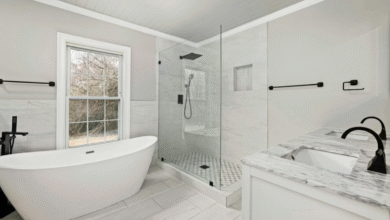Choosing the Right Beds for Care Homes – Essential Features and Benefits

Selecting the ideal beds for care homes is a crucial decision that impacts both the comfort and safety of residents. Quality beds are essential for providing a restful and supportive environment for individuals in long-term care, especially those with mobility issues, health conditions, or age-related concerns. In addition to comfort, care home beds need to meet standards for durability, adjustability, and hygiene. In this article, we’ll explore the key features of care home beds and the advantages they bring for residents and caregivers.
1. Importance of Choosing the Right Bed
Care homes cater to individuals with diverse needs, including those with limited mobility, chronic conditions, or disabilities. Beds designed specifically for care environments provide vital support for these residents, helping reduce the risk of bedsores, joint pain, and falls. Furthermore, the right bed design allows caregivers to assist residents with greater ease and safety, enhancing the quality of care and reducing the likelihood of strain or injury for both parties.
2. Key Features to Look for in Care Home Beds
When selecting beds for a care home, it’s essential to consider several features that contribute to the bed’s functionality and usability:
a. Height Adjustability
One of the most significant features of care home beds is height adjustability. Adjustable beds can be lowered to assist residents in safely getting in and out, reducing the risk of falls. They can also be raised to a comfortable height for caregivers during tasks like feeding, dressing, or repositioning. Many care home beds offer motorized height adjustments, providing convenience and precision.
b. Multi-Positioning Options
Care home beds with multi-positioning capabilities allow residents to sit up, recline, or elevate their legs easily. This flexibility helps relieve pressure points, improve circulation, and reduce the likelihood of muscle strain. Multi-position beds are particularly beneficial for residents who spend extended periods in bed or who require support to maintain an upright position for activities like eating, reading, or socializing.
c. Built-in Safety Rails
Safety rails are a vital feature in care home beds, preventing accidental falls and providing additional support for residents when moving or adjusting their position. Most beds offer adjustable or removable rails, allowing caregivers to customize the bed setup based on individual needs. Rails with quick-release options also ensure that caregivers can access residents quickly in emergencies.
d. Pressure Relief Mattresses
Beds for care homes should be paired with pressure-relieving mattresses to help prevent pressure ulcers and reduce discomfort. Pressure relief mattresses distribute weight evenly and reduce stress on high-pressure areas like the hips, shoulders, and back. Many of these mattresses are designed with memory foam or alternating air systems, which help to improve sleep quality and reduce the need for frequent repositioning.
e. Easy-to-Clean Surfaces
Hygiene is paramount in care environments, and care home beds should have easy-to-clean surfaces to maintain a sanitary atmosphere. Beds with removable or waterproof covers make cleaning and disinfecting easier, reducing the risk of infection. Materials that are resistant to moisture and stains are ideal, as they promote longevity and require less maintenance.
3. Benefits of Quality Care Home Beds
Investing in high-quality care home beds benefits both residents and caregivers in several ways:
- Enhanced Comfort: The combination of adjustable features and supportive mattresses offers residents a more restful and comfortable experience, improving their overall quality of life.
- Improved Safety: With built-in safety rails and adjustable height, care home beds reduce the likelihood of falls and accidents, making the environment safer for residents.
- Reduced Caregiver Strain: Adjustable beds make it easier for caregivers to assist residents, reducing the risk of back strain or injuries associated with lifting and repositioning.
- Better Health Outcomes: Pressure-relieving mattresses and multi-position options help residents avoid bedsores, joint stiffness, and circulation issues, supporting better physical health.
4. Choosing the Right Supplier
When purchasing beds for care homes, it’s essential to work with reputable suppliers who understand the specific needs of long-term care environments. Look for suppliers that offer warranties, maintenance support, and customer service to ensure the beds remain in optimal condition. Some suppliers may even provide installation and training on proper bed use, which can be beneficial for new caregivers.
Conclusion
Beds designed for care homes play a vital role in creating a safe, comfortable, and supportive environment for residents. By choosing beds that offer adjustability, safety features, pressure relief, and easy maintenance, care homes can enhance the quality of life for their residents and improve the work environment for caregivers. Whether for private or public care homes, investing in the right beds is a step toward ensuring both comfort and safety.




